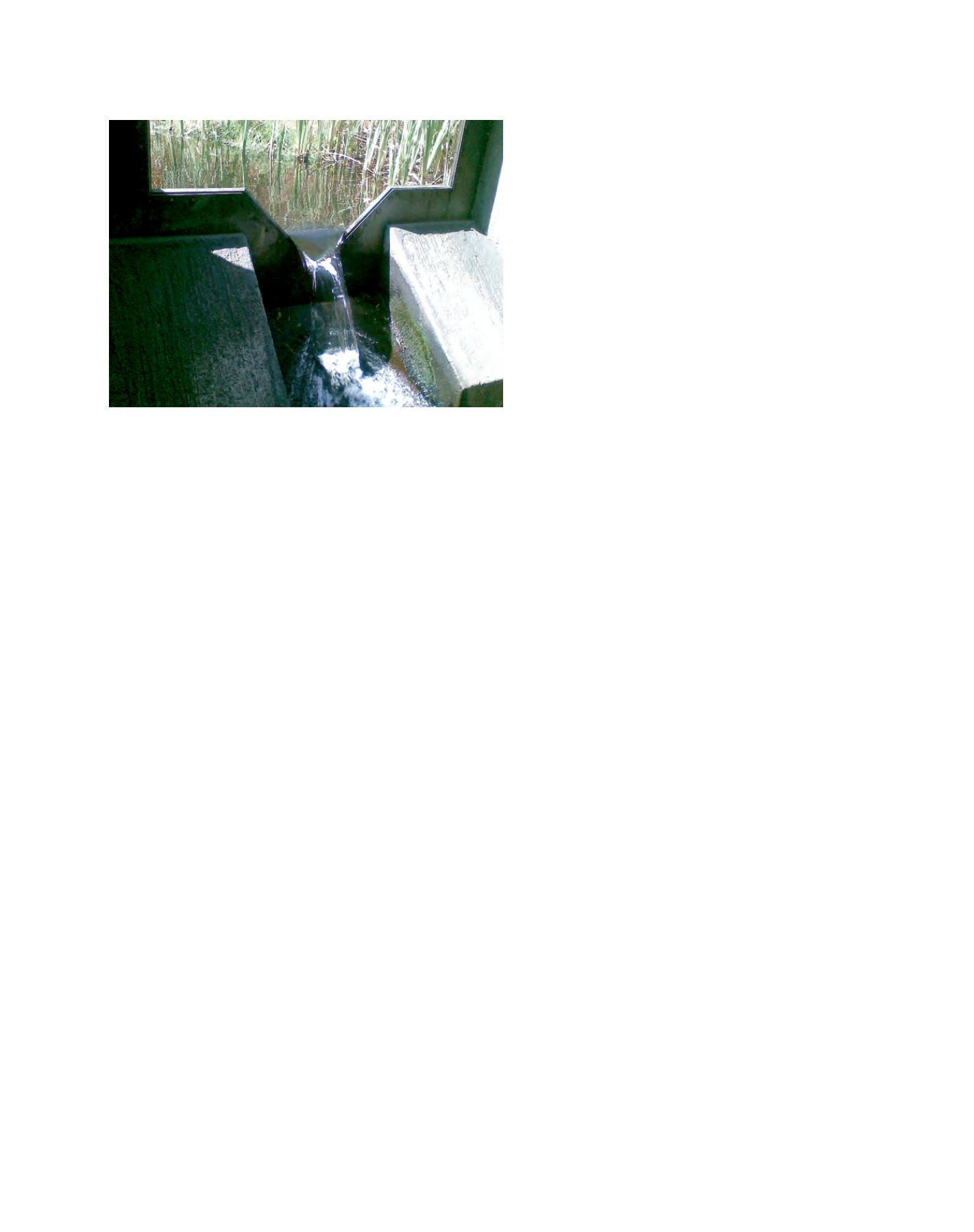

[
] 104
G
overnance
and
P
olicy
Although the winning point for this programme is
its ability to provide employment, many other indirect
consequences of the programme improve people’s general
standard of living. South Africa’s targets to provide most of
the population with potable water and sanitation are reliant
on sufficient water resources. This is a challenge in a largely
arid country. Water that otherwise would be lost is now
available for agriculture, urban and industrial use. Clearly,
water saved from alien plants can contribute to ensuring a
better future for the people of South Africa.
Ironically, just as Working for Water was being
conceived, the monitoring that justified it was being shut
down in the early 1990s by the government forestry divi-
sion, who could see no further use in quantifying water-use
by plantations. Only the original weirs at Jonkershoek
continued to be monitored by the Council for Scientific
and Industrial Research. These faced closure in 2007 when
government funding ceased. The newly created South
African Environmental Observation Network, or SAEON,
stepped in to secure the monitoring whilst negotiations
were underfoot. Fortunately, a change of perspective in
decision-making circles has made the future of catchment
monitoring more secure. It has been recognized that flow
data is relevant far beyond commercial forestry, particu-
larly in understanding the relationships between rainfall
and runoff in a changing climate. In addition it is recog-
nized that if we are to understand the direction and nature
of climate change in a country where climate is naturally
highly variable, long-term records are essential. If we are
to ensure that water continues to play its social, economic
and ecological roles from source to its eventual sink in
our oceans, then an integrated monitoring and research
approach – moving away from narrow sectoral inter-
est – is needed. Adaptation to altered water delivery is
also highly dependent on understanding what happens to
water as it enters the cycle.
In international literature on public works the multi-
ple objectives of the South African Working for Water
programme have beendescribed as beingwithout precedent.
In biodiversity circles it is lauded as the largest environmen-
tal management programme in Africa. Among many policy
decision-making processes which impact people as well
as the environment, Working for Water stands out as one
where scientific evidence is evaluated, progress ismonitored
and assessed in both the biodiversity and social spheres and
new research is commissioned to ensure that decisions are
underpinned by as sound evidence as is available.
5
Yet in
the 1930s when the catchment monitoring programme was
launched, these outcomes could not have been foreseen.
This suggests that whilst monitoring programmes need to
be based on sound scientific reasoning, we should be open
to unintended results. We should also protect environmen-
tal monitoring programmes from the vagaries of narrow
and sectoral interests that may threaten their continued
existence. The challenges we face need interdisciplinary
approaches and, it can be argued that, support for environ-
mental monitoring programmes will be strengthened, and
their results be more broadly useful, if they are initiated in
partnership with people from different sectors.
supply infrastructure. If invasive plants are not kept in check it is likely
that they will double their stream flow reduction impacts in 15 years.
But could evidence that invasive plants used more water than
indigenous vegetation be sufficient to muster the kind of resources
needed to eradicate them? For several decades environmental volun-
teers and conservation agents had been clearing invasives with
limited resources and not much hope of making an impact.
In 1994, South Africa had its first democratic elections and with these
came hope that some intransigent problems could be solved. It took a
group of scientists convinced of the need for action based on the stream
flow evidence, a far-sighted government minister and a big dose of
serendipity to create a solution. If poverty alleviation could be linked to
invasive alien plant control then funding could be attained for clearing.
From this, the Working for Water programme was born in 1995.
3
Poverty, exacerbated by widespread lack of skills training, is
recognized as one of the biggest problems facing South Africa. Large
sectors of communities, including rural communities, face the pros-
pect of almost permanent unemployment. Those hardest hit by this
are women and young people, who with low education and no skills
struggle to enter employment.
Working for Water engages otherwise unemployed people to clear
invasive alien plants using an integrated approach of physical clearing,
chemical treatments and biocontrol to tackle the problem. From 30
projects in 1995, there are now 300 clearing projects. Almost 20,000
previously unemployed people are employed a year. Programmemanag-
ers aiming to meet targets to engage women, young people and disabled
people ensure that 53 per cent of those employed are women, 22 per
cent are young people and 0.6 per cent are disabled. Social development
programmes run parallel to the clearing programme. These are oper-
ated in partnership with other organizations and include establishing
childcare facilities for communities where Working for Water is active,
HIV and AIDS education programmes, and a programme to reintegrate
ex-offenders into the workplace, as well as training in clearing, restora-
tion and workplace health and safety issues. Training is also given in
business skills to develop contractors from disadvantaged communities
who thenmanage the clearing teams and, it is hoped, will be able to take
up private clearing contracts.
4
Run off from mountain catchments has been measured since 1937 with
continuously-recording stream flow gauges such as this one at Jonkershoek,
South Africa
Image: Nicky Allsopp
















